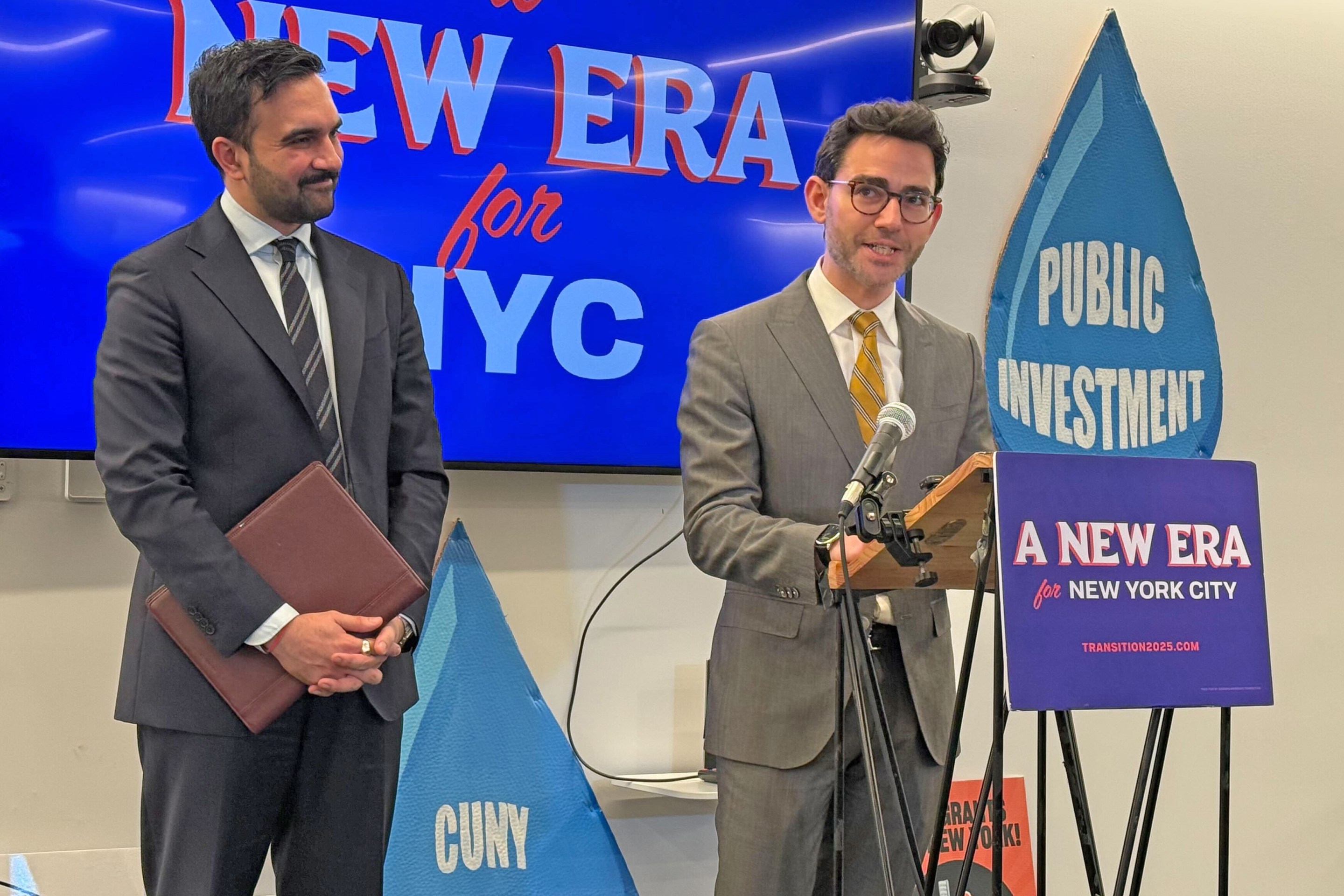Mayor Adams can go ahead and remove three blocks of protected bike lanes from Bedford Avenue in Brooklyn amid opposition from the politically connected members of the local Hasidic community, a Brooklyn judge ruled Tuesday.

The city Department of Transportation's own stats show the protected bike lane led to a reduction in crashes and injuries on Bedford Avenue, but Judge Carolyn Walker-Diallo nevertheless agreed with the agency that Adams's decision to replace the protected lane with an unprotected lane was legal and did not require advanced public notice.
Adams's move to rip up the new green paint "is only a modification" because an unprotected bike lane "will still exist at that location," Walker-Diallo said in her decision. The city law that requires prior notification of any "major transportation projects" does not apply to bike lanes, she said.
"It is clear that the parties have deeply divergent views on what is best for the community regarding the bike lane modification," Walker-Diallo said in her decision. But, she wrote, "Modification of the bike lane is not a major transportation project."
Peter Beadle, the lawyer representing the local middle schooler who sued the city to keep the bike lane in place, called the decision disappointing. DOT should reconsider, Beadle said.
"I really hope the city comes to its senses and realizes there is a better way forward," he told Streetsblog. "It is absurd to me to have to imagine that someone could be killed because the city takes this action after its own agency made it explicitly clear that if they did this people could die. That would be an absolute sin."
Beadle said it's telling that the judge's ruling didn't mention the city's "Exhibit B," a presentation from DOT that said the protected bike lane reduced crashes and injuries along Bedford Avenue by 47 percent, and that removing it would make an officially designated "Vision Zero priority corridor" more dangerous.
"Outside of the realm of law, no one can look at this decision reasonably and conclude that its rational to revert back to a design that was identified by DOT as one of the top ten percent of most dangerous streets in Brooklyn," said Beadle.
Council Member Lincoln Restler (D-Brooklyn), who represents the area, said the judge's decision was illogical. He said the removal of the bike lane should require the same notification as the installation and criticized the Mayor for making a political decision that puts people at risk.
"For months, I have tried to get the Adams administration to improve safety for children along Bedford, but instead the Mayor ignored us and has forsaken cyclist, pedestrian, and driver safety," he said in a statement. "The reckless decision to rip out the Bedford bike lane proves yet again that Eric Adams cares more about his political future than our collective safety.”
For months, I have tried to get the Adams administration to improve safety for children along Bedford, but the Mayor ignored us & has forsaken cyclist, pedestrian, and driver safety.
— Lincoln Restler (@LincolnRestler) July 9, 2025
But protected bike lane supporters also saw the ruling as an opportunity, since Walker-Diallo said bike lane changes on a street where bike lanes already exist can go forward without public notification.
If moving a bike lane from the protected location to the roadway can be done without community notification, as Walker-Diallo claimed, swapping a non-protected bike lane to a protected bike lane can be done with similar ease, and without a lengthy, contentious community review process.
Baruch Hertzfeld, the father of plaintiff Rafe Herzfeld, who bikes along Bedford Avenue to his middle school, said he hopes the judge's logic will be used to justify turning more non-protected bike lanes into the safer protected bike lanes.
"It's an enormous waste of resources for the city to rip up a bike lane," said Hertzfeld. "But hopefully a new mayor that comes in can change all the bike lanes to protected bike lanes without going through this whole rigamarole."
"In this instance, the mayor can move a bike lane for three blocks but on the other hand there is hundreds of miles of bike lanes that need to be better protected," Herzfeld added.
Beadle agreed.
"If the interpretation of the communication statute is that changing one type of bike lane to another type of bike lane doesn’t require community notice then we need to change all the non-protected bike lanes to protected bike lanes immediately because we know that they make all road users safer," he said.
Leaders of Williamsburg's Satmar Hasidic community pushed Adams to remove the protected bike lane in response to videos posted on social media of children getting off school buses mid-block and running between parking cars and in the path of cyclists on their way to sidewalk. DOT tried to placate those concerns by banning parking at certain locations to create mid-block painted bus stops, which are almost always blocked by illegal parking.
Adams flipped against his own DOT's protected bike lane after a town hall in the neighborhood May. The bike lane has the support of the local City Council members, Chi Ossé and Lincoln Restler, both of whom have been targets of the mayor's public ire.
A Satmar Hasidic-affiliated social media account that helped stir to the bike lane literally thanked god for its removal, which will likely lead to more injuries to pedestrians and cyclists.
"Burech Hashem," the account, @WMSBG, posted on X. "Court dismissed the case against removing the Protected Bike Lane on Bedford Avenue, allowing the @NYCMayor to go ahead with taking out the dangerous design that caused multiple accidents to children and others."
Burech Hashem.
— WILLIAMSBURG NEWS (@WMSBG) July 9, 2025
Court dismissed the case against removing the Protected Bike Lane on Bedford Avenue, allowing the @NYCMayor to go ahead with taking out the dangerous design that caused multiple accidents to children and others.
The mayor weighs in
Mayor Adams, whose own DOT installed the bike lane after significant outrage, celebrated Walker-Diallo's ruling in a statement shared with the news outlet Williamsburg 365.
"Following a needless back-and-forth with elected officials who disregarded the needs of their own constituents, we are grateful that the judge dismissed this case and is allowing us to move forward with reconfiguring the bike lane," the mayor said. "The families of Williamsburg can now rest assured that their children are safe just steps from their homes."
Adams has been front-and-center in support of bike lane opponents, insisting that the redesign made the street unsafe despite city data to the contrary. He is almost certainly hoping his decision to nix the protected bike lane wins him Satmar votes in November.
Both Adams and Walker-Diallo are connected to the Brooklyn Democratic Party, whose former chair Frank Seddio represented the bike lane's opponents in court.
Like most Brooklyn judges, Walker-Diallo has donated to both Seddio and the county party, Streetsblog previously reported.
Reporting by Dave Colon






